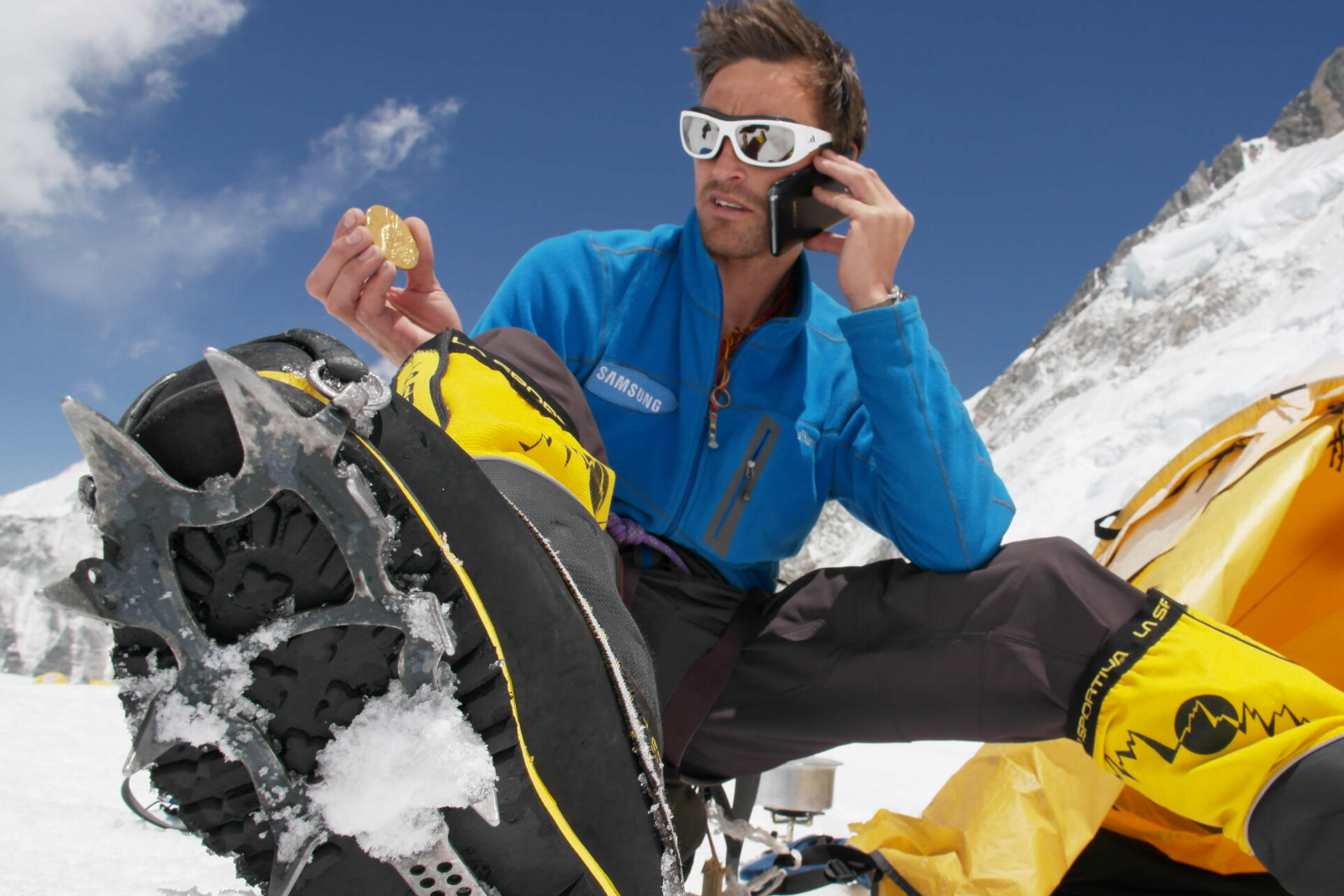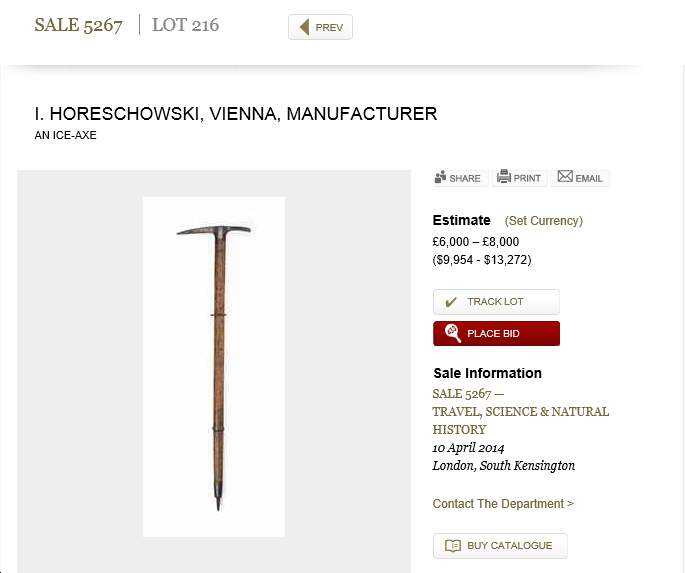Kenton Cool on Everest in 2012 with an Olympic Gold Medal awarded to the 1922 expedition
Kenton Cool famously took an Olympic Gold Medal, awarded to the same 1922 British Everest expedition, to the summit of Everest in 2012 to fulfil a pledge made to place one of the medals, awarded for mountaineering, on the summit. "To stand on the summit for the 10th time is simply amazing," Mr Cool said in a message sent via his expedition team. "To have with me an Olympic Gold medal awarded to the 1922 team is humbling. "This promise needed keeping, and after 90 years the pledge has been honoured for Britain."
The axe, manufactured in Vienna by I Horeschowski, is believed to have been donated by Ruth Mallory to the Pinnacle Climbing Club and subsequently given to William Threlkel. The ice axe was on loan to National Mountaineering Exhibition at Rheged but is now expected to sell for between £6000 and £8000.
It is believed that this is the ice-axe used by George Mallory on the 1922 Everest Expedition. This was the first serious attempt to climb the mountain. During the expedition Mallory with Major (later Lieutenant Colonel) Edward Norton and Howard Somervell set the first altitude record on Everest, when on the 21 May 1922 they reached a height of 26,800ft (8,170m). On this first attempt no supplementary oxygen was used.
After Mallory’s disappearance on Everest in 1924 it is believed that his wife Ruth donated some of his equipment to the Pinnacle Climbing Club. This was the first women’s climbing club, formed at a time when mountaineering was very much a male preserve; it is well known that the Mallorys were supporters of radical causes such as this club. The axe came into the possession of Nancy Carpenter (nee Ridyard), who was an early member of the club and a pioneering mountaineer, with several new routes in the Alps and the Scottish Highlands to her credit.
In her eighties Nancy moved to Matterdale End in the Lake District, where her neighbours were the Threlkeld family. She actively encouraged their son William’s enthusiasm for the Lakeland fells and mountaineering and when the time came for him to buy an ice axe she suggested that he “save his money” and use this axe. She did however tell him of its history, and that it “was now his and he should never give it away”. Sadly William was killed in a traffic accident in 1985, while still a young man, and his family felt the National Mountaineering Exhibition was the most appropriate place for the axe to now reside.
This is not the first item from the 1922 expedition to find its way onto the auction market, back in 2005 a 9 inch by 4 inch piece of the memorial plaque to the the 7 sherpas killed in an avalanche during the expedition appeared on ebay - though this was later withdrawn from sale following reaction in the climbing world. The market for climbing memorabilia is very strong with any items related to George Mallory and Everest, in particular, likely to attract international bidders. It is hoped that this unique ice axe can stay in Britain, but it is by no means certain.
Note: This article was restored from the archives. It's published creation date is inaccurate.


